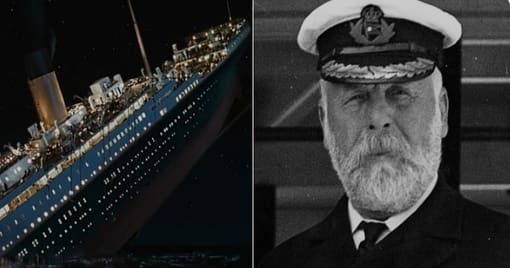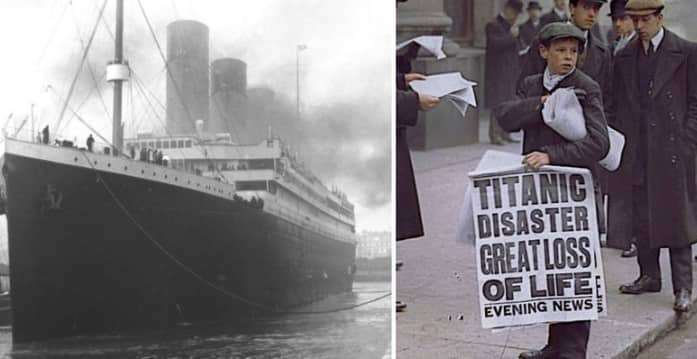Contents
There are events that have left deep marks in world history and some mysteries that are still unsolved. Such mysteries manage to remain on the agenda even after hundreds of years have passed. Here are some of these events and mysteries such as why the Titanic sank and the real story of the sinking of the giant ship. In this context, it should be noted that the Titanic disaster was a tragic event that occurred in 1912 when the RMS Titanic, one of the largest passenger ships in the world, hit an iceberg on its maiden voyage.
This maritime disaster is not only considered a serious failure of the technology of the period, but also a combination of the safety standards of the period, the human factor and overconfidence. The structural weaknesses of the ship at the moment of impact, the lack of sufficient life jackets and emergency protocols quickly determined the fatal consequences of the incident.

The reasons for the sinking of the Titanic appear as a complex set of factors that require a multi-faceted perspective in detailed analyses. The iceberg impact opened a large hole in the bottom of the ship, causing water to enter rapidly, which disrupted the ship’s balance and caused it to begin to sink.
In addition, the circumstances in which the incident occurred, the inadequate maritime technology of the period, and the lack of emergency preparations further increased the size of the disaster. We all remember the “come back Jack” scene in the famous movie about this incident, right? We recommend you to study English vocabulary to understand that.

The Titanic Disaster: A Brief Overview
Titanic was the largest and most luxurious passenger ship of the time when it entered service in 1912. Although the advanced engineering techniques used in the construction of the ship made it appear “unsinkable“, they actually concealed some critical design flaws. This created a misleading perception about the ship’s reliability. Some mistakes made in order not to compromise its appearance caused the ship to sink quickly.
First of all, it should be noted that the ship was designed to have 16 watertight compartments; however, the structure of these compartments did not eliminate the risk of water leaking into the others in the event of water leaking into one compartment. The designers ignored the fact that the upper parts of the compartments had to be closed and did not take precautions that could have prevented the disaster. This deficiency caused the ship to quickly take in water at the time of the accident. As will be remembered, if the ship had not taken in water so quickly, those who came to the rescue would have probably saved many more lives.
In addition, the quality of the materials used in the construction of Titanic and the joining techniques were also a matter of debate. Some studies suggest that the iron and steel used on the ship were of low quality and more prone to cracking. These factors are considered to be one of the pathological causes of the disaster. Here again, we see the emphasis on quality being more important than the name. In other words, let’s not forget that the quality of the materials used in a building is more important than the architect or construction company. Here, one of the important answers to the question of why the Titanic sank is the use of low quality materials.

Iceberg Collision: Was It the Only Cause?
Titanic, which set off with great ceremony and applause, collided with a giant iceberg on the night of April 14, 1912, while sailing in the Atlantic Ocean. The rapid and effective intervention of the crew at the moment of the collision reflected the efforts to reduce the size of the accident; however, the ship’s huge structure and sudden damage made it impossible to control the situation. This incident revealed the ship’s vulnerabilities. After all, the damage was extensive and since the ship was huge, repair and maintenance tasks became quite difficult.
The hollow caused by the iceberg quickly affected the ship’s watertight compartments and caused water to fill the ship. The panic and communication problems experienced at the time of the accident made it difficult to coordinate rescue operations. This process led to a great tragedy for both the crew and the passengers. One answer to the question of why the Titanic sank is the extreme panic of the passengers. We must say that; in the early moments, some passengers realized that the number of lifeboats was insufficient and caused a huge stampede.
The moment of the accident has gone down in history as the moment when the uncontrollable forces of technology and nature collided. The terror experienced by the passengers and crew once again revealed how misleading the belief that the ship was “unsinkable” was. This incident caused a great shock in the maritime world. After all, even though it was foggy that night, the ship should have seen this iceberg and turned the rudder. So why didn’t the rudder break and the great tragedy occur? Here, great carelessness and the lack of foresight that comes with the feeling of somehow being unsinkable are also evident.

FAQ the Titanic Disaster!
After giving some answers to the question of why the Titanic sank, let’s now briefly list and try to answer the most frequently asked questions and topics of interest on the subject.
1. Why the Titanic sank?
The Titanic sank due to design flaws, insufficient lifeboats, and especially major hull damage caused by hitting an iceberg.
2. When did the Titanic sink?
The ship sank on the morning of April 15, 1912; the ship began to take in water immediately after the collision with the iceberg and began to sink in a short time.
3. How many passengers and crew were on the Titanic?
There were approximately 2,224 passengers and crew.
4. How many lifeboats were on the ship?
Although there were 20 lifeboats on the ship, this number was insufficient to secure all passengers and crew.
5. What was the most decisive factor in the sinking of the ship?
The most decisive factor was the massive hull damage caused by the iceberg collision and the subsequent flooding. As a result, the entire ship took in water and sank in just a few hours, creating a major disaster.
6. How did this accident affect maritime regulations?
Maritime rules were reviewed after the accident; the number of lifeboats was increased, emergency drills and safety standards were revised. This was important also about why the Titanic sank.
7. How many people died in the Titanic disaster?
Approximately 1,500 people lost their lives in the Titanic disaster, making it one of the worst maritime disasters in history.
8. What are the most common myths about the Titanic?
There are many myths circulating, such as the claim that the Titanic was unsinkable, that it was a cursed ship, and that mysterious events occurred; however, research has refuted most of these claims and revealed elements that are not based on truth.
Lessons Learned from the Titanic!
This great disaster brought with it new precautions and new breakthroughs in ship technologies. In the end, what was thought to be impossible happened and the ship that was thought to be unsinkable sank. In this context, it should be noted that the ship’s design and technological features can also be counted among the factors that triggered the disaster.
Although Titanic was considered the most modern ship of that period, the inadequacy of watertight compartments and engineering errors in some critical areas paved the way for the ship to sink rapidly after the collision. In addition, the inadequacy of life jackets and rescue boat capacity on the ship seriously reduced the passengers’ chances of survival.
In conclusion, if you ask why the Titanic sank, we can generally say that its sinking occurred as a result of
- The combination of natural factors,
- Technological inadequacies and
- Human errors.
This tragedy led to the re-evaluation of both technical and safety standards in maritime history and became an important milestone in the establishment of international regulations to prevent similar disasters in the future.
